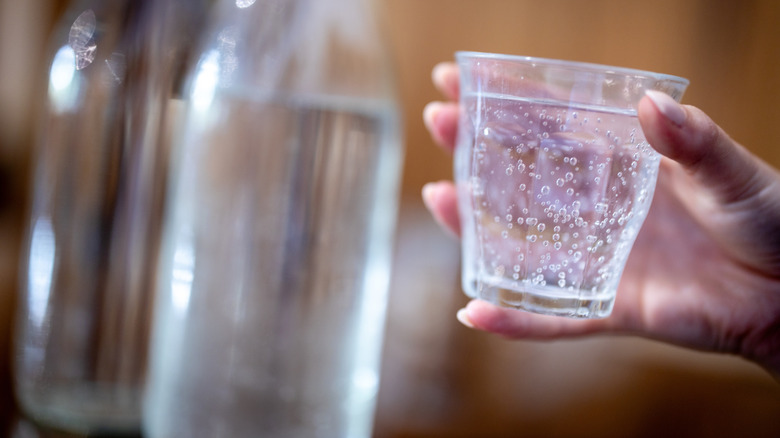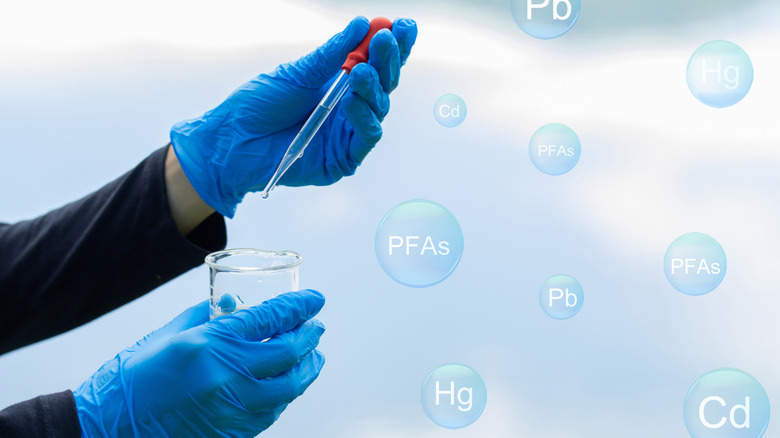The Chemicals Likely Hiding In Your Favorite Sparkling Water
Sparkling water is a huge market in the U.S. Estimated at $30 billion, with a 12% compound growth rate, sparkling water has come to dominate the beverage industry. Nothing is better than a crisp, cold sparkling water (or at least I think so). Apparently, it also makes an amazing addition to scrambled eggs, yes, try it. So it's probably pretty upsetting to learn that sparkling waters have noticeable levels of PFAS (perfluoroalkyl and polyfluoroalkyl substances), colloquially known as "forever chemicals." These chemicals take an extremely long time to break down in nature, and at certain concentrations, PFAS are known to be associated with fertility issues, developmental issues in children, cancers, and disrupting our body's hormones. Not so great.
According to a 2020 Consumer Reports study, all the sparkling waters tested had measurable amounts of PFAS. In response, La Croix and Canada Dry said their products are below federal guidelines. Coca-Cola's Topo Chico had the highest levels, but the company said they're committed to making improvements. It's not clear why carbonated waters have higher levels of PFAS, but many brands are well below the 1 part per trillion threshold, showing it's possible to get PFAS to very low levels.
We're still learning how PFAS affect us
Before you hesitate to order sparkling water with your espresso, it's important to keep in mind a few things. All of our knowledge of PFAS is still developing. This isn't to say don't worry at all, but as with many things, tons of factors are involved. You have to consider concentrations, exposure, length of exposure, frequency of exposure, and bio-accumulation. While these chemicals are most likely not good for the environment or humans, it's hard to know just how much we're all exposed to and just what they will do to us. We do know that the industries and companies that manufacture these chemicals are aware that PFAS are toxic.
To make matters worse, it's actually really difficult to limit your exposure. The first step is to research your town or city's drinking water, which you can do relatively easily via Google. If you drink from a well source, like most rural Americans, get your well water tested. Other steps include using stainless steel, aluminum, cast iron or carbon steel cookware. PFAS are mostly associated with non-stick cookware coatings. It might be the case that your sparkling water probably isn't the biggest source of PFAS, and if its long history indicates anything, sparkling water certainly isn't going anywhere —chemical controversy or not.

